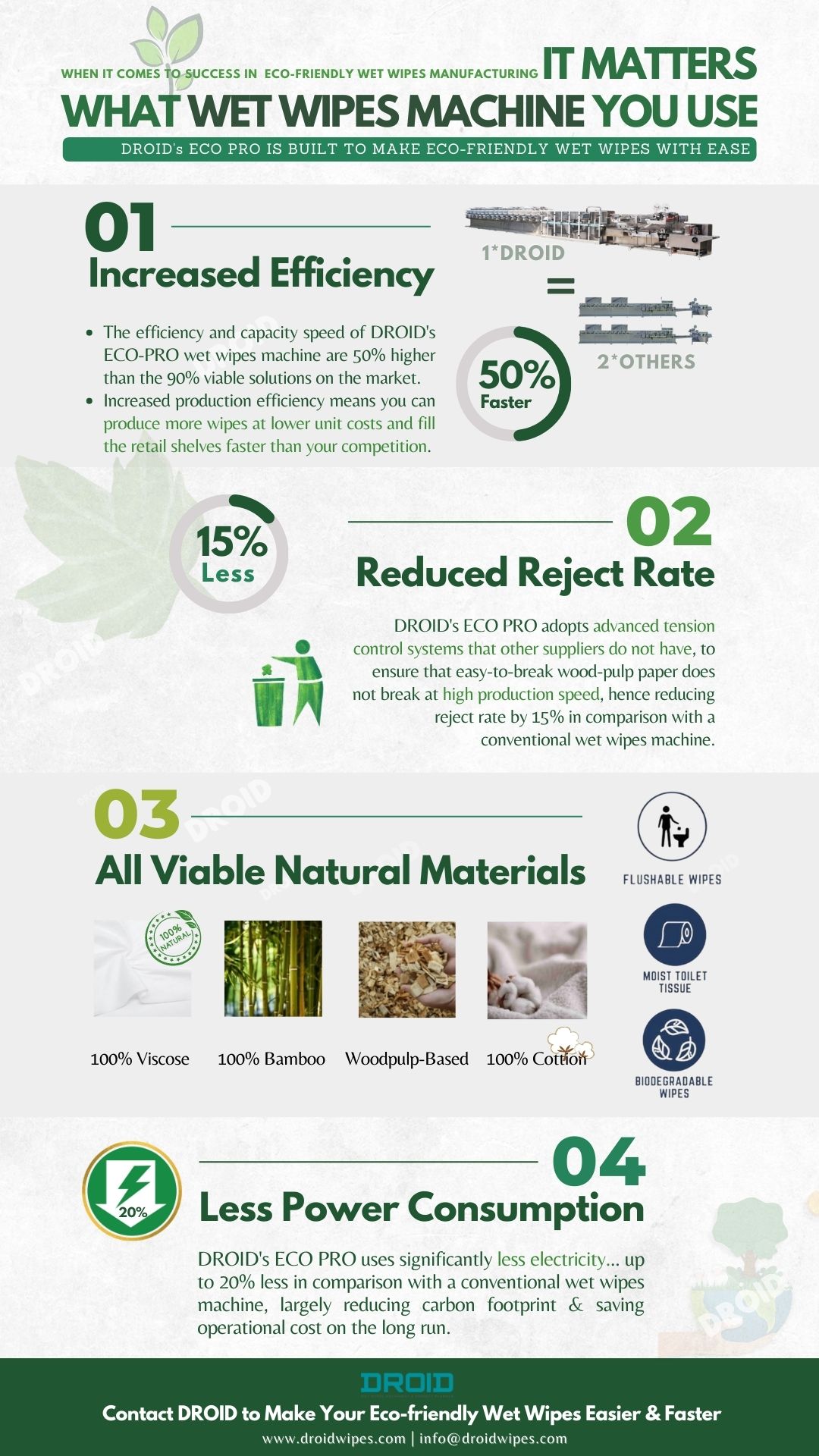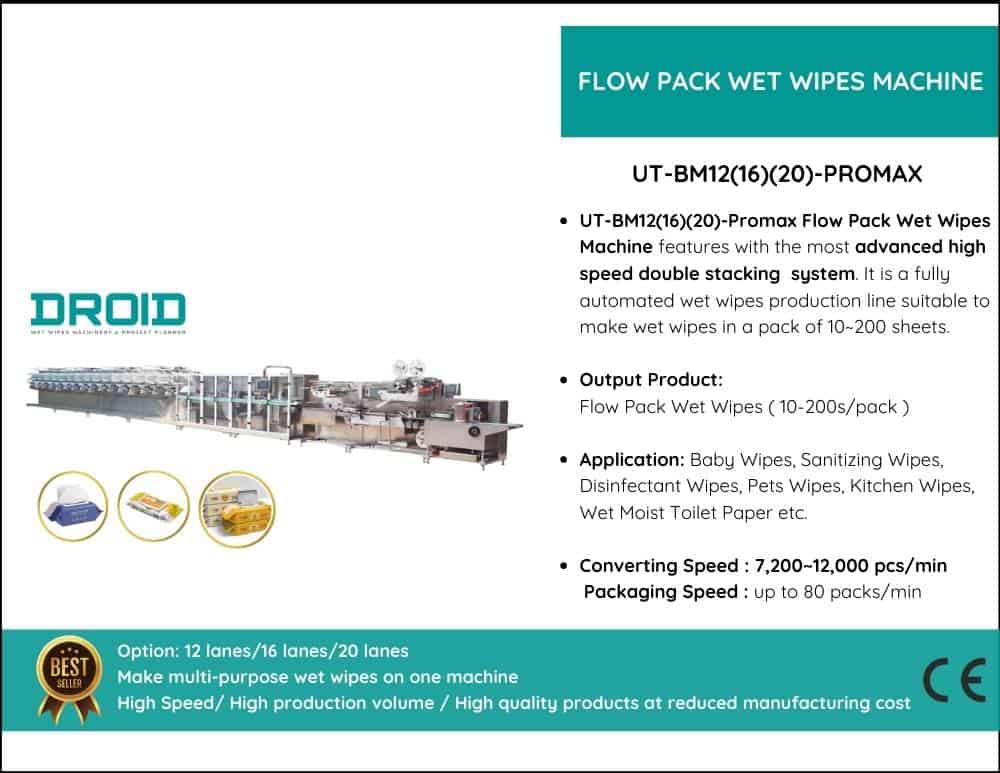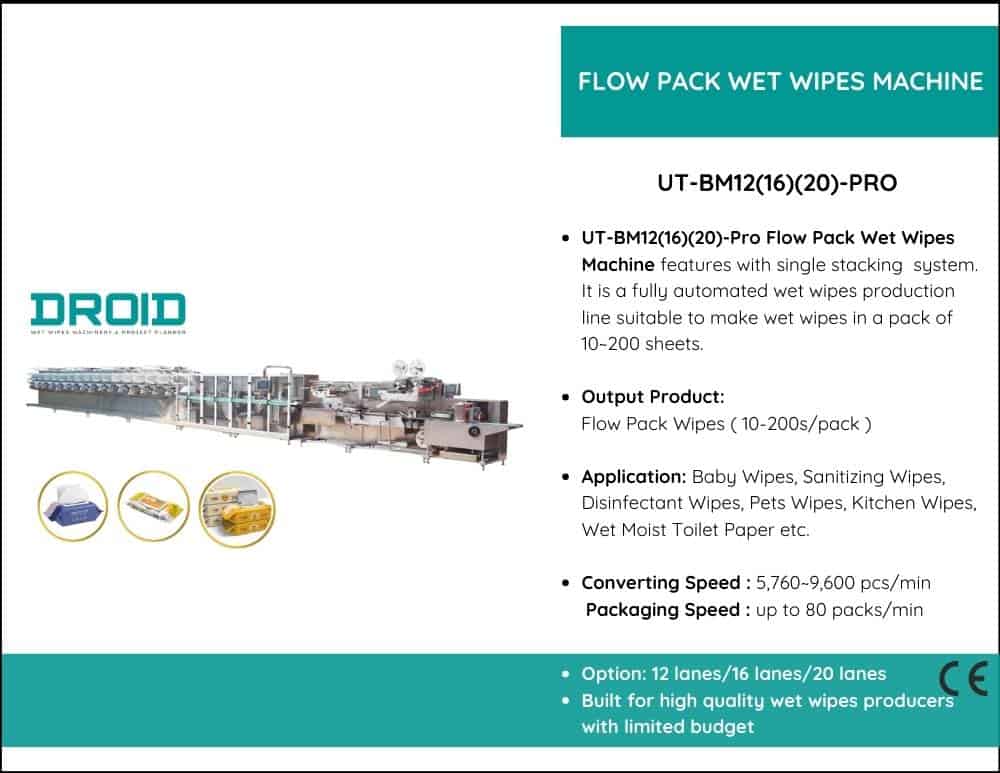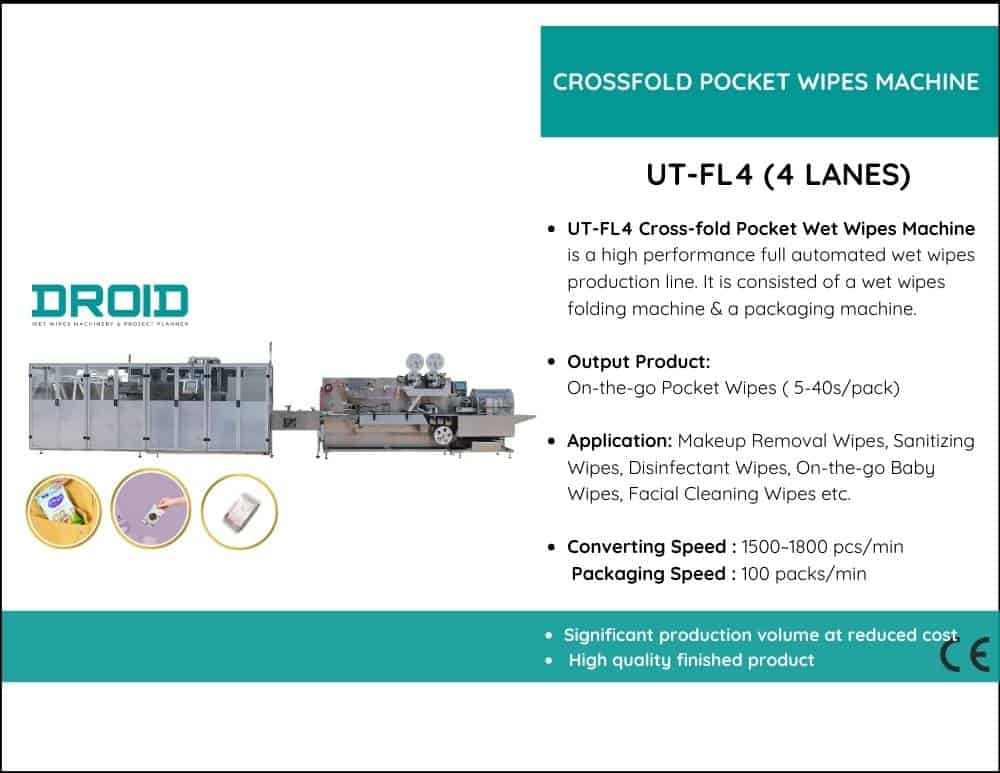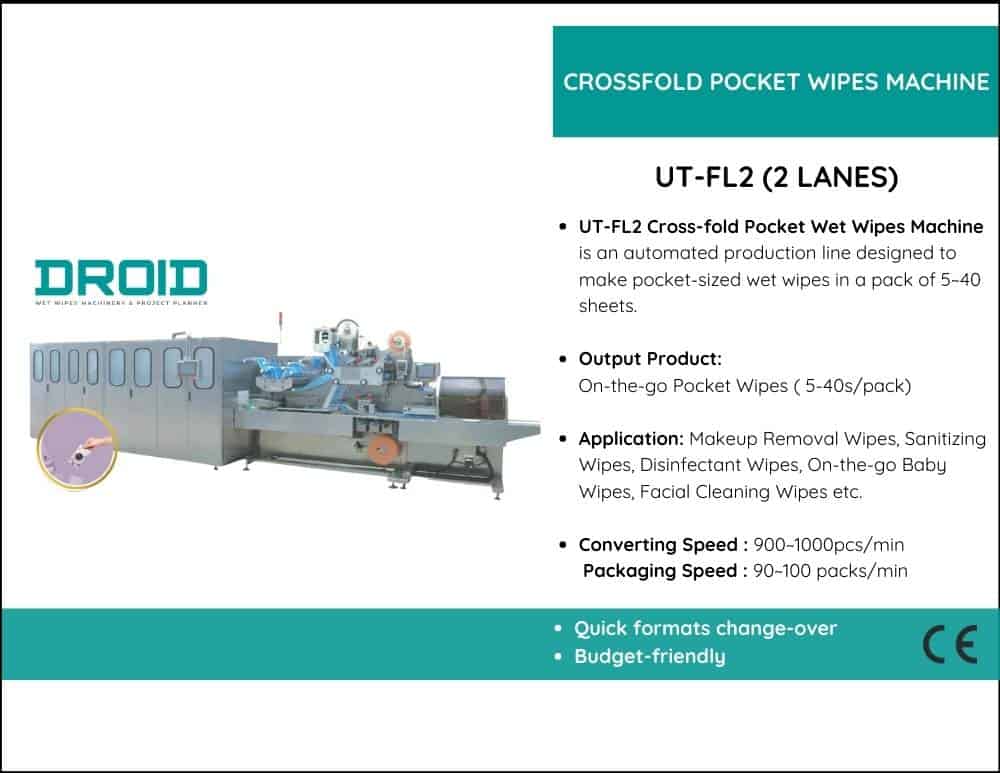1. Advanced Tension Control
Biodegradable textiles may readily stretch or deform during manufacture because they are less robust and more elastic than synthetic substrates. Machines need servo-driven unwinding devices that maintain a constant fabric flow to avoid ripping or uneven feeding. To provide smooth handling without overstressing the material and minimizing stoppages, intelligent dancer systems dynamically modify web tension in real time.
2. Adaptable, Low-Temperature Sealing
Traditional sealing techniques often use a lot of heat, which is good for polypropylene but bad for paper or plant-based films. Biodegradable wipes machines need to have accurate temperature control that adjusts to eco-packaging materials. Options like ultrasonic or cold sealing are particularly beneficial, as they provide robust and dependable pack integrity without burning, adhering, or compromising the packaging’s biodegradability.
3. High-Precision Folding Units
One of the most delicate processes when dealing with soft, environmentally friendly textiles is folding. Folding plates that are hard or sharp may wrinkle, misalign, or even rip, wasting output. Therefore, to preserve fabric consistency and product quality, machines should include programmable folding modules for Z-fold, C-fold, or W-fold configurations. These modules should be made with a softer touch and smoother transitions.
4. Biodegradable-Compatible Packaging Films
The packaging films are also part of the wipes’ commitment to sustainability. Although the usage of PLA, PBS, and paper-based laminates is growing, their behavior differs from that of conventional plastic films; they are often stiffer or more heat-sensitive. To ensure production speed and stability, a machine must be designed with optimal film routes, forming boxes, and sealing jaws that can run these materials smoothly without jamming or sticking.
5. Dust & Fiber Management
In contrast to synthetic mixes, natural fibers like cotton, viscose, and bamboo release more loose particles. This fiber dust may contaminate products, clog sensors, and cause unscheduled maintenance pauses if not correctly managed. Improved vacuum suction, filtration, and anti-static systems should be included in machines designed for biodegradable textiles to maintain a clean production environment and minimize downtime.
6. Sustainability & Energy Efficiency Features
More resources shouldn’t be used in the production of environmentally friendly goods. It is anticipated that contemporary wet wipes machines will include modular upgrade options that support environmental objectives, energy-saving initiatives, and improved air quality. Manufacturers may strike a balance between operational profitability and ecological responsibility by optimizing throughput while reducing the need for compressed air and power.



